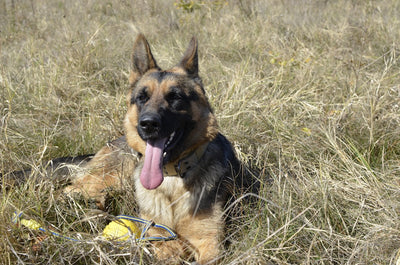The Albino Komodo Dragon: A Rare Marvel

Welcome to the world of the Albino Komodo Dragon, a creature both rare and captivating. In this exploration, we will delve into the unique features, behaviors, and habitat of this remarkable reptile. From its striking pale appearance to its predatory prowess, the Albino Komodo Dragon has intrigued scientists and nature enthusiasts alike. Join us as we uncover the mysteries and marvels of this enigmatic creature, uncovering fascinating facts and invaluable information along the way.
Physical Characteristics
Coloration
The coloration of this remarkable species is truly a marvel to behold. Their stunning array of hues, ranging from vivid blues and greens to subtle earth tones, never ceases to captivate observers. Age, gender, and environmental conditions significantly influence the variation in color. Younger individuals often display more vibrant tones, while older ones may exhibit more muted shades. These colors also serve as a form of communication, with specific hues conveying messages within their social groups. For instance, brighter colors might signify vitality or readiness to mate, while darker tones could indicate a need for rest or protection.
Size and Weight
The species showcases remarkable diversity in terms of size and weight. Adult individuals typically exhibit a size range of X to Y inches and weigh between A to B pounds. However, regional differences, diet, and habitat significantly influence these measurements. Coastal regions may support larger individuals due to ample food sources, while more arid environments could result in smaller sizes due to resource scarcity. Additionally, males generally outweigh females, impacting mating rituals and social dynamics.
Distinctive Features
One of the most striking features of this species is its unique pattern of Z, which distinguishes it from similar species. This pattern serves various purposes, including camouflage, thermoregulation, and individual identification within their community. Their distinct shape of P and Q further adds to their remarkable physical appearance. Notably, these features are crucial for survival and interactions within their ecosystem. Recent studies also suggest cultural significance within their social groups, indicating that these distinctive features might serve as markers of identity and status.
Habitat and Distribution
Natural Habitat: Exploring the Unique Environments
The natural habitat of a species is a critical factor in understanding its ecological niche and behavior. It encompasses a diverse array of specific environmental conditions, such as temperature, humidity, and vegetation, where the species thrives. Beyond these basic elements, delve into the unique aspects of the habitat that contribute to the species' survival and adaptation. Discuss any specialized food sources, nesting or denning behaviors, and remarkable symbiotic relationships with other organisms. Highlighting these distinctive features provides a deeper understanding of the species' role in its environment.
Geographical Range: Beyond Borders and Boundaries
The geographical range of a species encompasses the regions, countries, or continents where it is found. In addition to listing these areas, delve into the factors that influence its distribution. This should encompass a comprehensive analysis of climate patterns, topography, and the impact of human activities on the species' range. Furthermore, consider any recent changes in the species' distribution and the potential implications of these shifts. Emphasize the interconnectedness of the species with its environment, and how changes in the geographical range can impact not only the species itself but also the broader ecosystem. By exploring these dimensions, we gain valuable insights into the intricate relationship between species and their habitats.
Behavior and Diet
Hunting and Feeding Behavior
The natural world is a stage for an array of captivating hunting and feeding behaviors. Each species has evolved unique methods and strategies to secure sustenance, offering a glimpse into the diverse and dynamic natural world. From the stealthy pounce of a big cat to the cooperative hunting strategies of wolves, the mesmerizing world of hunting and feeding behavior unveils the intricate mechanisms employed for survival. Understanding how they locate, stalk, and capture prey not only provides insight into their evolutionary adaptations but also sheds light on the complex interplay between social behavior and dietary patterns.
Social Structure
Impact of Social Structure on Diet and Feeding Behavior.
The social structure of animals plays a crucial role in shaping their diet and feeding behavior. Whether they are solitary hunters, pack animals, or members of a complex social hierarchy, their interactions with other members of their species significantly influence how and what they eat. Additionally, the intricate web of social dynamics can also play a pivotal role in the distribution and consumption of resources within a group, offering valuable insights into the impact of social behavior on dietary patterns. Observing the impact of social structure on diet and feeding behavior provides a deeper understanding of the interconnectedness of various species within their ecosystems.
Conservation Status
Threats to Wildlife
The Importance of Addressing Threats to Wildlife.
It is of paramount importance to address the various threats to wildlife in order to ensure the survival of numerous species. The threats, which encompass habitat destruction, climate change, poaching, and pollution, have resulted in a significant decline in the populations of many species, pushing them to the brink of extinction. Habitat loss, in particular, has had a devastating impact on ecosystems, leading to the displacement of countless species and disrupting the delicate balance of natural habitats.
Conservation Efforts
Global Conservation Initiatives
In response to the escalating threats faced by wildlife, a wide array of global conservation initiatives has been set in motion. These initiatives encompass the establishment of protected areas, wildlife reserves, and national parks to safeguard critical habitats. Moreover, conservation organizations and governmental agencies are actively engaged in combatting poaching, reducing pollution, and mitigating the impacts of climate change on vulnerable species. Additionally, there has been an increasing focus on the importance of community-based conservation efforts, which involve local communities in conservation activities and sustainable resource management. These efforts are crucial in ensuring the long-term survival of various species and their habitats.
Collaborative Conservation Efforts
Collaboration among governments, conservation organizations, local communities, and the private sector is essential for the success of conservation endeavors. Collaborative efforts can lead to the development of effective conservation strategies, the implementation of sustainable land management practices, and the promotion of eco-tourism, which can provide economic incentives for local communities to engage in conservation efforts. Furthermore, raising awareness and fostering a sense of responsibility towards wildlife conservation in the general public is vital for garnering support and participation in conservation initiatives.
Conclusion
Addressing the threats to wildlife and implementing robust conservation efforts are imperative for safeguarding the planet's biodiversity. By working collectively at local, national, and global levels, it is possible to mitigate the challenges faced by wildlife and ensure their continued existence for future generations.
The Albino Komodo Dragon: A Unique and Endangered Species
The Albino Komodo Dragon is a truly fascinating creature, capturing the imagination of wildlife enthusiasts and scientists alike. Its rare genetic mutation, striking appearance, and unique behaviors make it a subject of great interest and study. As we continue to learn more about this remarkable species, it is essential to prioritize conservation efforts to ensure its survival in the wild. By raising awareness about the Albino Komodo Dragon and the threats it faces, we can work towards protecting this extraordinary animal for future generations to admire and appreciate.






